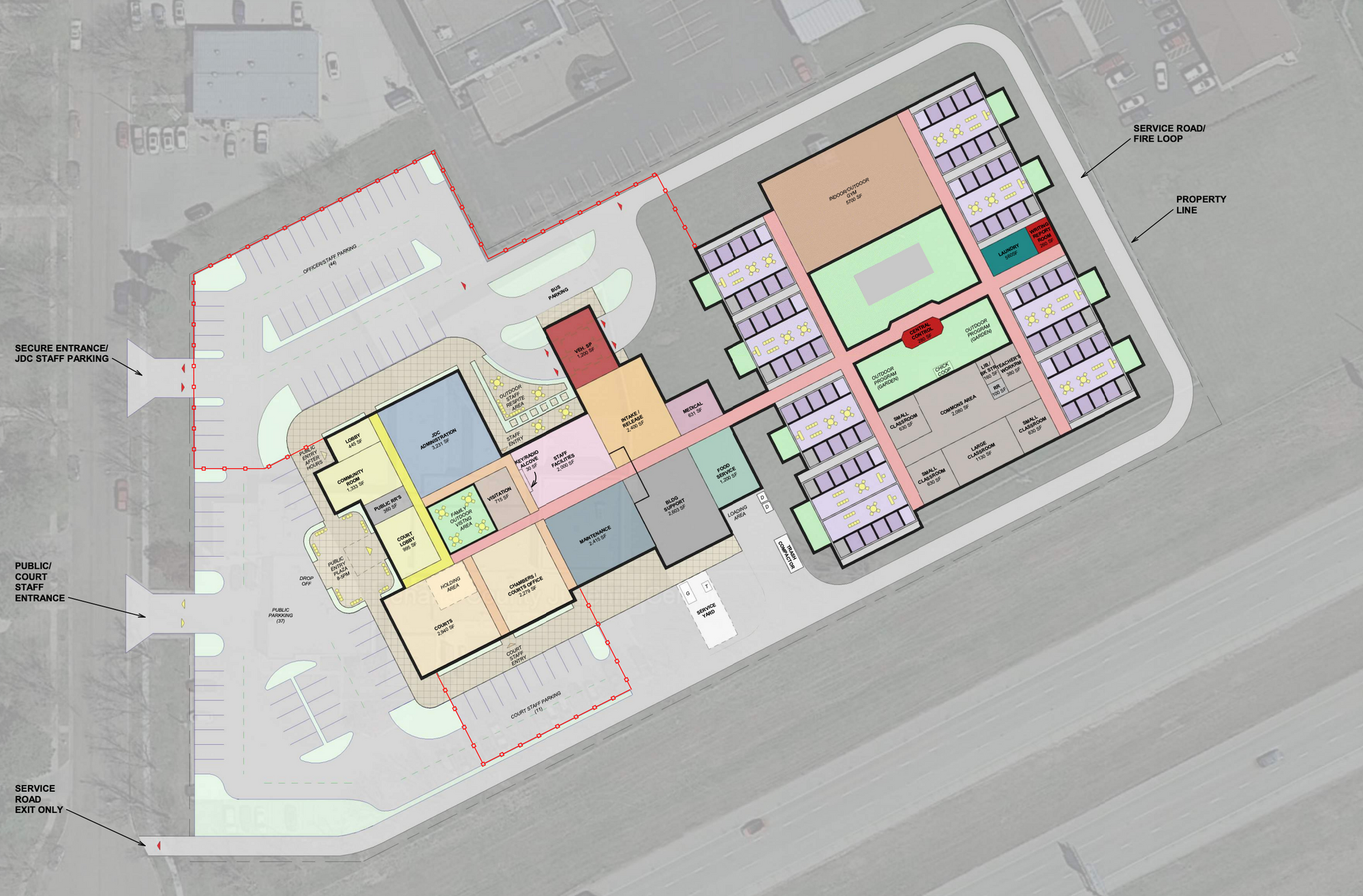Simplified: The Minnehaha County Juvenile Detention Center (JDC) is running out of space, and the current layout makes it hard for staff to keep the youth-to-staff ratios needed. Here's a look at a proposed solution.
Why it matters
- JDC is a place where kids who've committed crimes can be safely detained, but also receive education, treatment and other services they may need.
- The current facility has a number of challenges to keeping kids appropriately separated, and with no staff break rooms or showers, it's also wearing on the people who are working at JDC because they've got nowhere to unwind from intense situations, said Tyler Klatt, assistant commission administrative officer for Minnehaha County.
- Architects and consultants working with the county looked at two main solutions – one, add on to the current facility, or, two, build a new building. And, according to their research, building new is the best deal.
"It's pretty clear that option two is going to make more sense," said Dick Strassburg from Minnesota consultant group Tegra.
Why a new facility now?
Conversations about the need for a new JDC building have been going on for some time, but it's becoming increasingly urgent as the existing 40-bed facility fills.
- Estimates shared with the County Commission this week showed a need for up to 48 beds by 2026, and up to 60+ beds by 2036.
- The staff needs are also becoming more urgent, especially when it comes to recruitment and retention.
"We’re trying to build a facility for the kids, but the staff are in here longer than the kids," said Andrew Eitreim with Architecture, Inc. "And in order to recruit and retain we still need those best practices ... natural light, ventilation, areas to be outdoor."
There's also the issue of how the layout affects youth-to-staff ratios.
- JDC Director Jamie Gravett explained that the detention center often has to put kids back in their individual rooms and disrupt their schedule because staff are needed elsewhere.
- For example, if there's an assault in the building, or if police arrive with a kid who needs to be admitted, or essentially any scenario that takes staff away from kids, the needed 8:1 youth-to-staff ratio gets out of whack. And kids need to go into individual rooms to be secured until staff can get back to that ratio again.
"Ultimately, we’re putting kids down (in their individual rooms) too much compared to what we should be doing for best practices," Gravett said.
Tell me more about the proposed facility
The proposed 67,000 square foot facility would have capacity to hold 64 beds.
The plan would be to construct the new facility on the existing JDC campus. And because of the current layout, much of the construction can happen before there's any need to touch/tear down the existing facility.
The new facility would also change the layout to keep kids more separated. Instead of a long hallway, kids would be in eight-person pods.
- Each pod would have eight bedrooms, a shower and the ability for kids to eat meals and do programming within the pod.
- Ideally, in the new setup, kids will be less likely to get stuck in their individual rooms all the time, and instead can spend that time doing schooling, treatment or other activities, Gravett said.
And, phase two of the new facility would bring:
- a larger courtroom,
- a separate space for intake so kids coming in aren't using the same entrance as the general public,
- space for staff,
- and outdoor spaces for kids, visitors and staff.
What will it cost?
It's estimated the new building will cost just over $50 million.
What would it mean for my tax bill?
Funding the $50 million facility will likely require a tax increase.
Susan Beaman with the County Auditor's office estimated that in 2024, the owner of a $300,000 house could see about a $64 increase on their annual tax bill if the county moves forward with this plan.
What happens next?
The county is hoping to reassemble a 2019 facilities review group to offer feedback on the plan.
The next step is figuring out funding on the county level and getting the approval from both the county and the community to move forward with the project.


